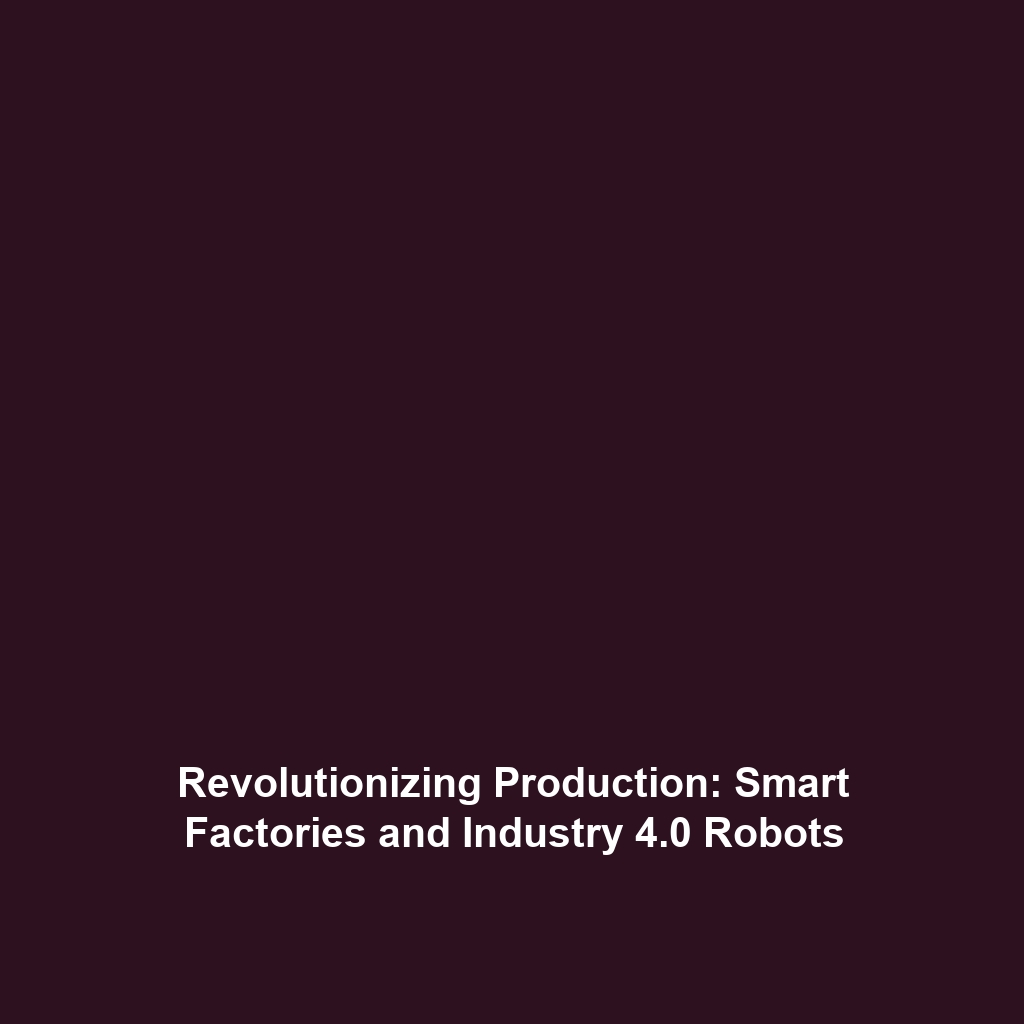The Rise of Smart Factories and Industry 4.0: Autonomous Robots at the Forefront
The emergence of smart factories marks a transformative shift in the manufacturing sector, aligning with the principles of Industry 4.0 where autonomous robots take center stage. This integration of advanced robotics and automation not only signifies productivity enhancements but also paves the way for intelligent manufacturing processes. As industries evolve under these smart frameworks, understanding the key elements and implications of this technological revolution becomes crucial in recognizing the impact of autonomous robots on modern production systems.
Key Concepts
In the realm of smart factories and Industry 4.0, several concepts are paramount:
- Cyber-Physical Systems (CPS): Integration of physical processes with computational resources.
- Internet of Things (IoT): Networking of devices to gather and share data, enhancing operational efficiency.
- Big Data Analytics: Utilizing large datasets to drive decision-making in real-time.
- Artificial Intelligence (AI): Enabling robots to adapt, learn, and improve performance autonomously.
These elements synergize within the scope of autonomous robots, facilitating smarter decision-making, optimized workflows, and heightened production capabilities.
Applications and Real-World Uses
The role of robots in smart factories has broadened significantly, leading to various applications:
- Automated Assembly Lines: Robots enhance manufacturing efficiency by executing repetitive tasks with precision.
- Quality Control: Through AI integration, robots perform real-time inspections and quality assessments, minimizing defects.
- Predictive Maintenance: Utilizing IoT-enabled sensors, robots can monitor machine health and predict failures before they occur.
These applications demonstrate how the rise of smart factories and Industry 4.0 is used in the realm of autonomous robots, creating systems that are both self-sufficient and remarkably efficient.
Current Challenges
Despite the advancements, several challenges impede the full realization of smart factories:
- Integration Issues: Difficulty in integrating legacy systems with new technologies poses significant hurdles.
- Data Security Concerns: Increased connectivity raises concerns about cyber threats and data breaches.
- Workforce Displacement: The advent of automation may lead to job losses, necessitating shifts in workforce skills.
These challenges of the rise of smart factories highlight ongoing issues in the autonomous robots sector that require critical attention and innovative solutions.
Future Research and Innovations
The future of smart factories and autonomous robots is ripe with innovation. Upcoming research is focused on:
- Enhanced AI Capabilities: Further development of AI to improve decision-making and operational efficiency.
- Advanced Robotics: Innovations in materials and designs for more flexible and capable robots.
- Collaborative Robots (Cobots): Development of robots that work safely alongside humans in varied environments.
These potential breakthroughs emphasize the importance of continued exploration within Industry 4.0 for transforming autonomous robotic applications.
Conclusion
In conclusion, the rise of smart factories and Industry 4.0 signifies a pivotal moment in manufacturing, with autonomous robots leading the charge toward a more efficient and intelligent industry. The implications of this shift are profound, and as research continues, it is essential to address the challenges while harnessing the innovations that lie ahead. For further insights into advancements in autonomous robots, explore our other articles on robotics and automation technologies.
